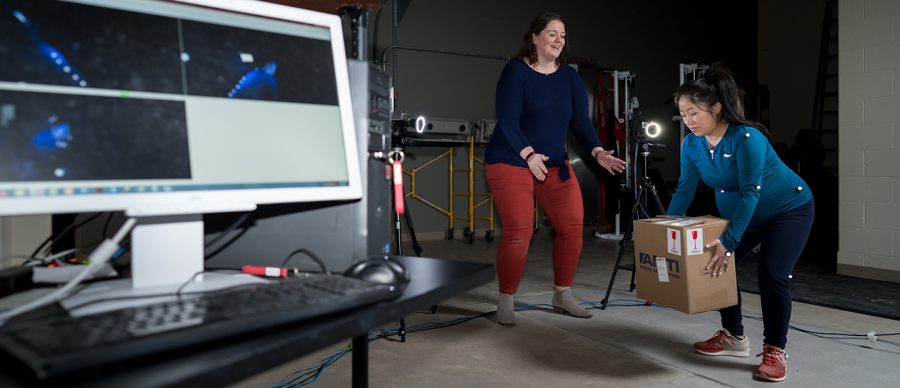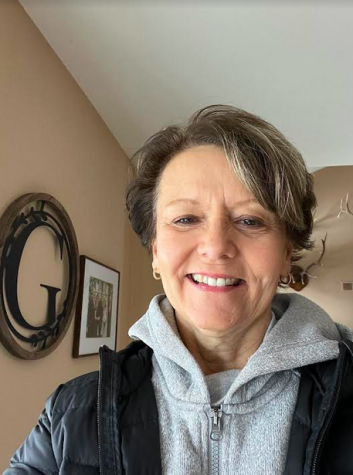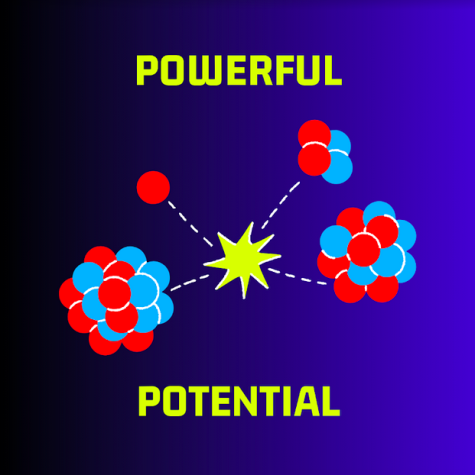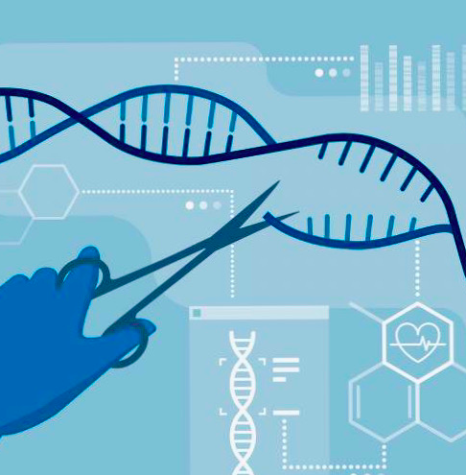BEAR lab focuses on Self + Environment + Goals = Behavior
Biomechanics, Ergonomics and Abilities are all associated with human movement. The Biomechanics Ergonomics and Abilities Research (BEAR) laboratory at Oakland University focuses on whole health, taking into account these three factors when evaluating what it means to succeed in movement.
“People have a breadth of physical abilities and their own beliefs about those abilities,” Dr. Joshua Haworth, another co-director of the BEAR lab and an assistant professor in Exercise Science in the Department of Human Movement Science, said. “Mix in with this the effects of the built environment and varying social support and it is readily clear why precision medicine is both complicated and desperately needed.”
Haworth’s own project within the Bear lab involves seeking to describe the mechanisms responsible for the integration of sensorimotor information and repeated experience in the production of complex behavior. By using eye-tracking combined with motion capture and posturographic measures, he aims to identify motor strategies used during daily tasks like upright standing, walking, and interpersonal communication.
Dr. Tara Diesbourg, assistant professor in the Environmental Health and Safety Program in the Public and Environmental Wellness Department of the School of Health Sciences, is one of the three co-directors of the BEAR lab. She is also a certified professional ergonomist and a registered kinesiologist.
In the BEAR lab, Diesbourg’s focuses are on Ergonomics – the science of adapting the system and/or environment to suit the humans that interact with it both to increase efficiency and productivity, and to reduce the risk for injury and discomfort. To examine the fit between a person and their environment, ergonomists consider many factors. This includes considering the specific activity before it is done, the demands placed on the user, the size, shape, and appropriateness of the tools and equipment, and finally the information presented.
“My research focuses on different people, doing different things,” Diesbourg said. “Currently, I am interested in the risk for injury and burnout in pregnant workers, older workers, people who sit all day, non-binary or gender fluid individuals, and people working in healthcare settings.”
To highlight Diesbourg’s research:
Pregnancy in first responders: In collaboration with Dr. Kate Rougeau, another co-director of the BEAR lab, we are investigating the experiences of female first responders who have worked while pregnant. We aim to develop recommendations for policy changes for pregnant first responders to improve their quality of life and job satisfaction while reducing their risk for injury both before and after the baby is born.
Office Ergonomics Training in a Work-From-Home World: Along with my colleagues at Queen’s University, we are investigating whether prior ergonomics training has any impact on the quality of the workstation at home and on the development of discomfort and how we can provide quality ergonomics consultation services, virtually, for people working from home.
Ergonomics and Esports: Together with Dr. Rougeau, we are investigating discomfort, cognitive demand, burnout, and athlete identity in varsity esports players.
Effect of Gender Fluidity on Workplace Injury Risk: In ergonomics, there are published limits and recommendations for reaches and loads which are based on the average heights and weights for the general population. Males are generally assumed to be able to reach higher, and lift more weight than females, however to date, there has been no research regarding a person’s gender identity on the weights that they are able to lift comfortably.
The lab also supports multidisciplinary and multigenerational work. According to Haworth, it has had students coming from a variety of majors, schools and goals.
“We have had students from throughout the School of Health Science, as well as engineering, education, psychology, and film studies; across academic levels,” Haworth said. “Many of my recent mentees come from my home department, Human Movement Sciences (with Physical Therapy and Exercise Science programs), and have been interested in pursuing clinical professional graduate degrees such as MD (medicine), DPT (physical therapy), and OT (occupational therapy), though many also focus on sport performance and coaching/training.”
“If a student has a question about how something works in their day-to-day life and wants to try to answer it, I’m all for it,” Diesbourg said. “We all encounter things every day that make us wonder about how the world works. I am all about trying to answer those questions.”








